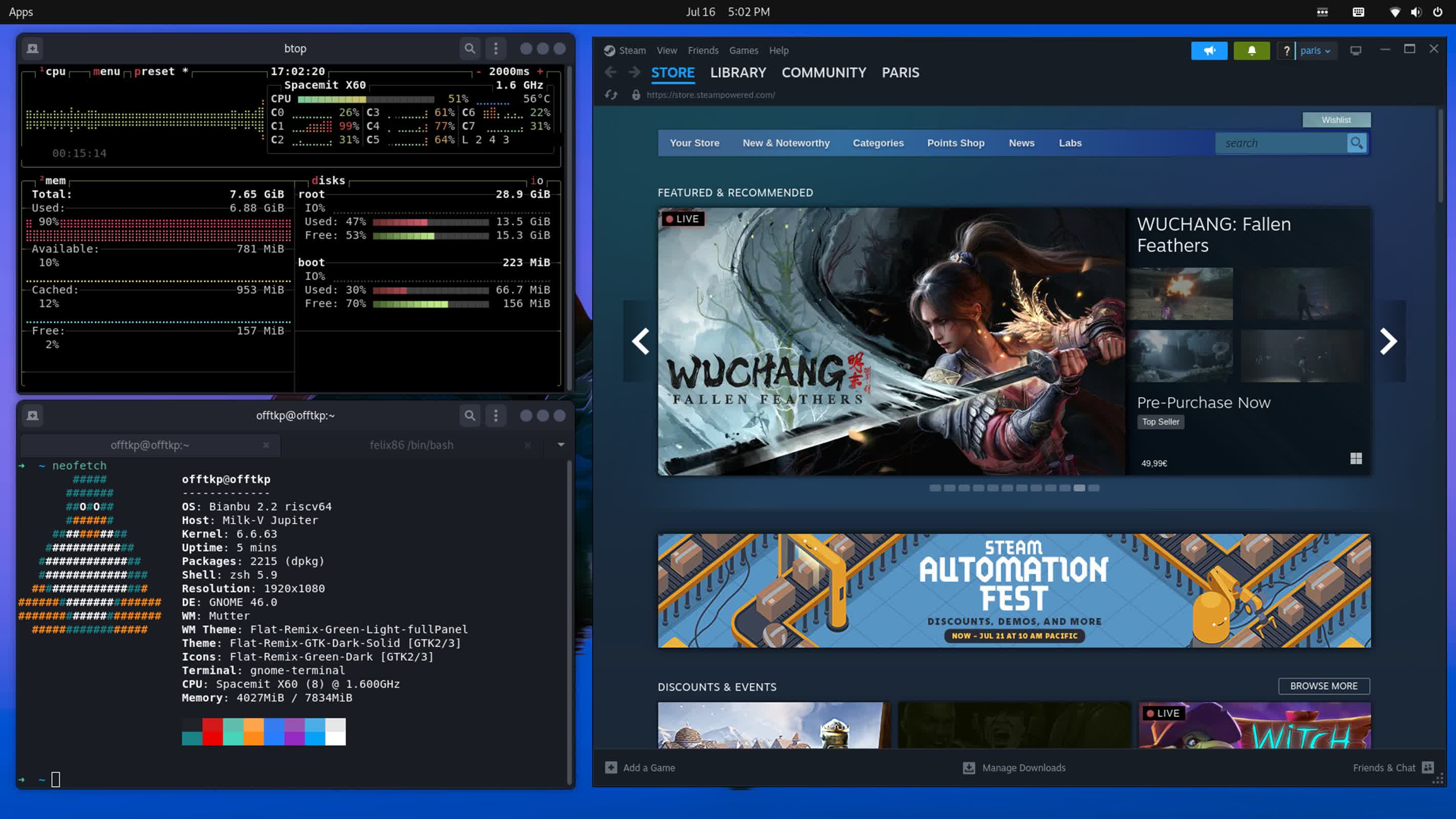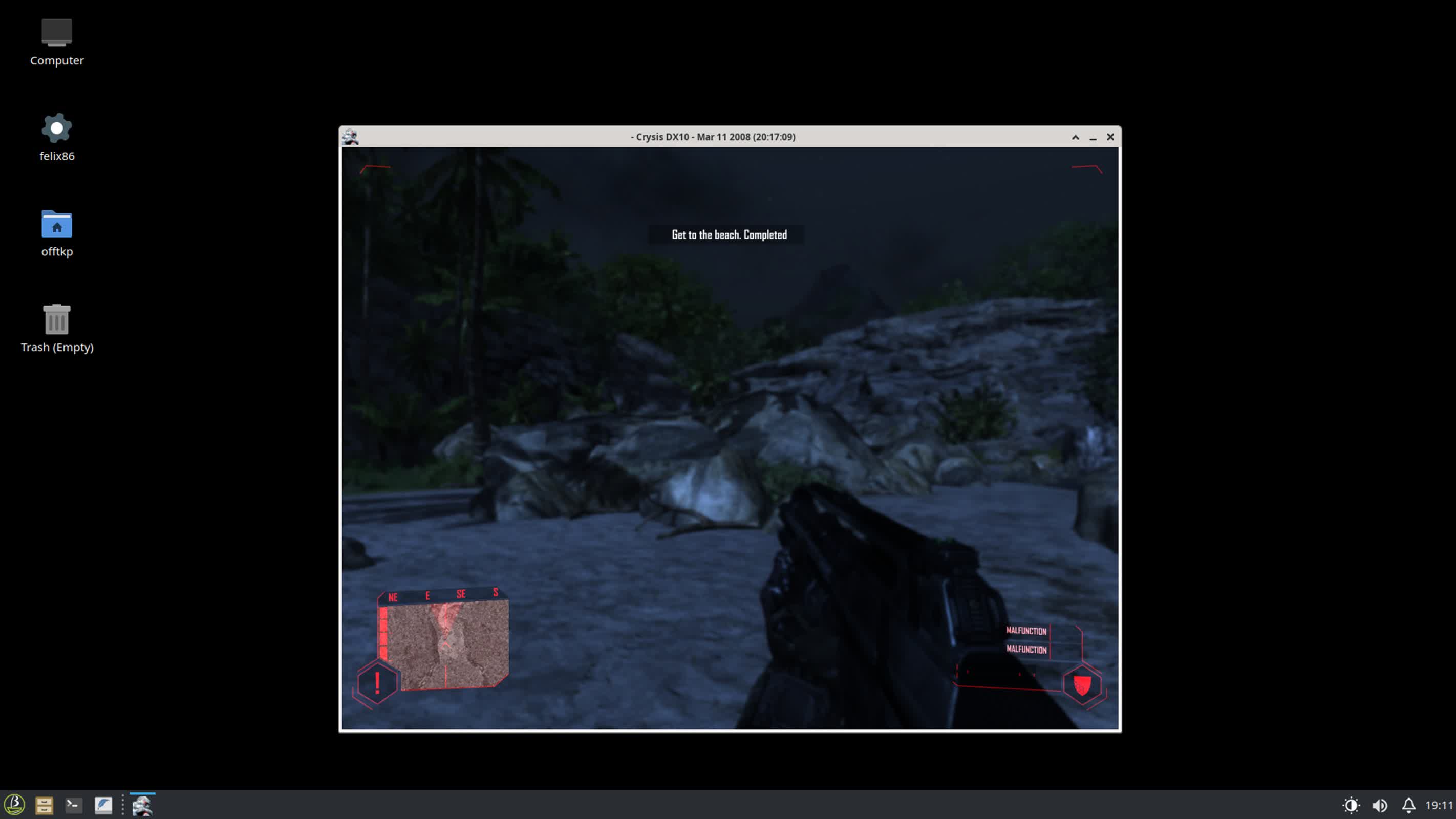What just happened? An open source computing milestone is unfolding as RISC-V systems – long considered a technology for embedded devices – begin to step onto the gaming stage. Developers have successfully enabled Valve's Steam platform to run on RISC-V-powered Linux systems, marking the arrival of big-name titles like The Witcher 3 and Crysis on this previously untapped architecture.
The development is not the result of a direct port of Steam to RISC-V, but rather a testament to the growing sophistication of felix86, a userspace emulator designed to bridge the gap between the x86 world and RISC-V hardware.
The felix86 project has made notable progress over the past few months. According to updates shared on its official blog and GamingOnLinux, the emulator's latest version makes it possible to launch and play complex AAA Windows titles, a feat that few expected RISC-V to achieve anytime soon.
Developers say that felix86 not only runs these previously incompatible games, but also improves the overall user experience. Setup is now more straightforward, and support for technologies like AppImage and file system emulation has improved, making game deployment and system integration smoother.
The successful launch of the Linux Steam client on RISC-V means games protected by Steam's DRM can now be played on devices running the open architecture.
RISC-V's reputation still largely rests within sectors like embedded systems and IoT devices, where billions of chips operate quietly in the background.
For most consumers, the platform's biggest successes have gone largely unnoticed. However, recent hardware such as the DC-ROMA laptop, the Milk-V Megrez board, and initiatives from companies like Framework are helping bring RISC-V into the spotlight.
As real-world applications expand, especially in enthusiast computing, achievements like running Steam and more gaming titles offer a glimpse of the platform's evolving potential.
Performance, it must be noted, is not yet on par with x86 or Arm competitors, especially for high-end gaming. Developers caution that while games now load and run, further optimization is needed to reach ideal playability.
For those tracking the slow but steady climb of open hardware in a world still dominated by proprietary architectures, this marks a noteworthy breakthrough for RISC-V, and perhaps the beginning of a new chapter in cross-platform, open source gaming.
Image credit: GamingOnLinux
Steam and AAA games now run on RISC-V thanks to emulator breakthrough


